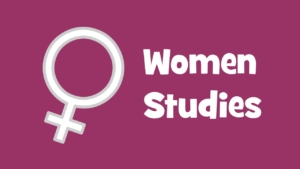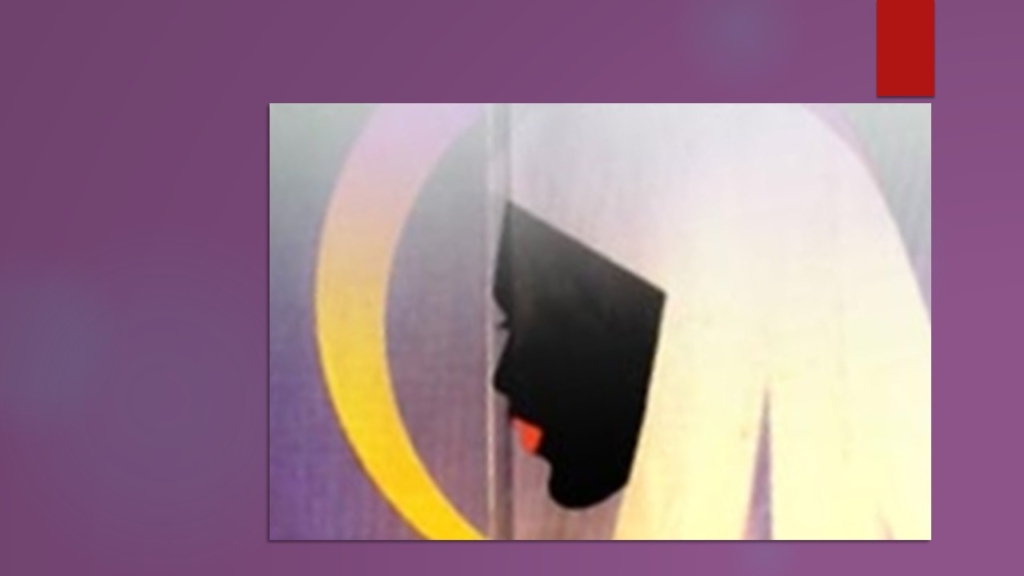You; The News International. 1993
 To rediscover the real image of Islam is the mission taken up by such modern women writers as Fatima Mernissi, Leila Ahmad and Rana Kabbani. It has been pointed out that Islam started as a revolution with special concern about the right of women and for the freedom of the human soul.
To rediscover the real image of Islam is the mission taken up by such modern women writers as Fatima Mernissi, Leila Ahmad and Rana Kabbani. It has been pointed out that Islam started as a revolution with special concern about the right of women and for the freedom of the human soul.
Our Prophet’s, (PBUH) teachings were liberal and revolutionary. Evidence from the biographies of his life available to us suggest that the creation of an egalitarian society was also one of his major concerns.
Unfortunately the egalitarian religion propounded by such an emancipator of the human race was ‘hijacked by men’ soon after his death. The revolutionary and liberating aspects of the message were lost somewhere in the sands of time as the emblem passed into the hands of the monarchs and the clergy.
Rana Kabbani’s detailed interview published in Spare Rib (Jan–Feb), a feminist magazine of U.K. contains interesting comments on the historical process which Islam had to pass through before its message could reach us – the modern man. The insight she offers could be of equal interest to a general readers as well as a scholar who may set herself/himself the task of rewriting the history of Islam and the Muslims.
Kabbani’s idea of religion is quite liberating and yet essentially positive:
You begin to see that the three monotheistic religions really have almost everything in common rather than great differences. You see them as religions that preach a very important tradition of Prophet hood. Prophet hood is a vital idea – the idea of people who are able to challenge their societies continuously….
[fusion_builder_container hundred_percent=”yes” overflow=”visible”][fusion_builder_row][fusion_builder_column type=”1_1″ background_position=”left top” background_color=”” border_size=”” border_color=”” border_style=”solid” spacing=”yes” background_image=”” background_repeat=”no-repeat” padding=”” margin_top=”0px” margin_bottom=”0px” class=”” id=”” animation_type=”” animation_speed=”0.3″ animation_direction=”left” hide_on_mobile=”no” center_content=”no” min_height=”none”][Islam] is a further elaboration of the same spiritual theme that begins with Abraham – of committing yourself to one God and trying to walk a very moral and just path….Muhammad’s (PBUH) message is one of all people being equal: regardless of gender, race, ability etc. It is the idea that all people are absolutely equal as spiritual creatures, and that the only thing that distinguishes one human being from another is their good deeds and the extent of their piety. Nothing else. I think this idea of equalitarianism is very important and it is probably something that needs to be reintroduced into society now and then.
The Prophet of Islam was a miracle in himself. He was born into a savage society to grow up into the model of refinement and excellence for all times to come. And that he certainly was and continues to be. Rana attempts to present before us the picture of the man which is true to authentic sources yet radically isolated from the literary tradition of the ‘warrior hero’ which has affected most biographies of the Prophet. Let us begin our search for the true message of Islam by looking at this portrait of the Prophet of Islam:
Muhammad (PBUH) was a man who was born to a poor family and orphaned at an early age, he was brought up by his grandfather, who also died when he was still a young boy. He grew up in a very aggressive and warring society. Because it was a poor society, raids against other tribes were the order of the day. Taking booty, both in terms of material wealth and human slaves, flourished. A patriarchal value system was operative.
Muhammad (PBUH) was very different. He represented values that were almost diametrically opposed to the values prevalent in the society at that time. He was not aggressive at all; in fact the very opposite, gently inculcating a new value system, a new way of life. He was someone who thought people shouldn’t be aggressive and the aggressive element in religion, actually came into Islam much later on and is not part of the doctrine preached by the last Prophet.
What was very interesting about the Prophet was that he got on very well with women. In women, he found the possibility of getting away from the crude reductionism of male ideas. That would explain why he debated issues that occupied his attention with women who surrounded him – both his wives and the other Muslim women who embraced Islam. Those debates have been suppressed in the writings about Islam, both by Muslims and by Orientalists. For example, the extent of his debates with Hazrat Khadija and how brilliant a scholar Bibi Aisha was, have definitely been left out.
It’s interesting that the holy Prophet was by no means convinced that the kind of positive discrimination he tried to set up in his society would be carried forth after his lifetime. He felt that patriarchy would triumph. He felt that his message of equal rights for women could be defeated by the misogynists in his camp. Certainly it was challenged very fiercely when the Muslims expanded into Byzantium, Persia and North Africa. It was challenged by the patriarchies already functioning, and which were either unable or unwilling to believe.”
During Muhammad’s (PBUH) lifetime, and during the lifetime of the early promoters of Islam – both men and women – there was a great revolutionary debate about the oppressed in society, and about women being one of the most oppressed groups in 7th century Arabia.
That explains why the first followers of Muhammad (PBUH) were women. They saw this ideological and revolutionary religion as a way of liberating themselves. It promised them money and economic independence. It gave them the right to inherit, which they hadn’t had before, instead of being the part of inheritance that they were, just like chattel or goods. This religion was saying to them not only will you not be inherited, but you will actually be inheriting yourselves’. It gave them the right to refuse to be married except by free will, and yet now we think of Islam as a religion that coerces women into marriage. This is nonsense, it’s a religion that gives women the right to refuse any marriage and any spouse of someone else’s choosing. It gave them the right to formulate complicated and very useful marriage contracts which gave them particular rights in particular situations. So it gave them all sorts of advantages that we don’t hear about until the 20th century in Europe. What’s interesting is where this debate took place – in the Mosque, which is really just a room looking off Aisha’s bedroom. Aisha was also married to Muhammad (PBUH). And in this Mosque, men and women were complete equals. How is it that we have now come to a situation where the Mosque is a male domain, where patriarchy reigns and where women have no voice? This is certainly not part of our history. It’s to do with influences, with vested interests that came to be coded as law; it is to do with the misinterpretation of our basic religious and ideological principles.
Here it is then. A reminder of the important position delegated to women during the era of the Prophet and denied afterwards. The denial came when the religion was taken over by men. When the precepts of Islam came to be codified as law, the real spirit and much of the fluidity of the message was lost. Historically speaking – 300 years after the time of the Prophet. What the women writers like Kabbani are trying to convey is that:
codification was already a misinterpretation of an earlier iconoclastic, pro-women., revolutionary Islam. Three hundred years later, the codification was very much a result of the patriarchies of other cultures, of Zoroastrian approaches to women. The Muslims who came to Baghdad, the Abbasids who founded the Abbasid empire – became so influenced by the patriarchal constants of that Iranian society, that they came unwillingly perhaps, and later deliberately, to incorporate them into Islamic law. So that Islamic law in the 10th century became almost unrecognizable from what Muhammad (PBUH) had preached.
Then came the days of colonialism – from late eighteenth century onwards. While Islam regained vigour as a comprehensive idea for challenging the colonialism the ‘women issue’ was muddled up altogether. The women of Islam, already living under the difficult conditions of a misinterpreted religion were faced with a new, powerful threat. This threat came from the scheming proud colonialists whose attempt was to secularise the Muslim communities under the pretence of ‘civilizing’ them. They also spoke about the women but they had little sympathy towards, or even understanding of the issue they proposed to resolve.
There was a very strong ‘civilizing mission’, which is first announced by Napoleon and becomes the White man’s burden. And one very important premise of this ‘mission’ is to say that we Europeans are civilized, we are secular and we are able to look at our societies and progress. You Muslims are sort of immured in barbarism, in inflexibility, in the inability to govern yourselves or your women. In fact, you are unable to treat your women with any modicum of humanity or respect, and so they should be rescued’. It’s funny you know, because Lord Cromer, who ruled Egypt for Britain – and who hated the suffragettes in Britain and hated feminism in Britain – took up the call for Muslim women. He said, ‘I am here to liberate Muslim women, I am here to liberate them from Islam’.
Lord Cromer’s mission was in fact to make Egyptian women and men docile colonial subjects. It was clear to the colonial powers that the great resistance to Colonialism often took on religious forms, and that Islam became politicized in reaction to Colonialism. It becomes a way of challenging Colonialism.
“And what is fascinating to me”, Rana continues, “is that this ‘mission’ carries on right into the 20th century and is taken up again by mainstream feminism. Western feminism’s approach to Muslim women is based on ideas which are very much the product of Colonialism.”
Hence the difficulties of living as an educated Muslim women in the modern world are immense: On one hand, they had to be wary of the snares of secularism while on the other, they had to face the antagonism of the religious extremists who would not hesitate from making life miserable for them by misinterpreting the religion.
As Muslim women, we are between a rock and a hard place: crushed between a Western hatred of our culture and religious heritage, and a fundamentalist appropriation and misinterpretation of that culture. We have to find a way of saying no to both extremes of hostility. We have to find a way of saying ‘wait a minute, we don’t want to give up being Muslim. Why should we?’ Why should we be told that the only way we’re going to be liberated and evolved as women, and as human beings, is if we cast off everything Islamic about our past and present? Nobody is asking that of Christian women, nobody’s asking that of Jewish women, so why is that asked of us solely?
At the same time we don’t want to be landed with an Islam which is an unviable relic of some medieval interpretation. We want an Islam that is vital, that helps us be ourselves, that helps us have spirituality, that helps us survive in the 20th century.
Rana Kabbani belongs to that group of Muslim women, who, undaunted by the harshness either of the ‘rock’ or the ‘hard place’ have set out upon rediscovery and reformation: finding out the misplaced history of the Muslim women, defending their faith against the antagonism of the west and preserving their liberty from the lusty assaults of fundamentalism. ‘And I think that this is the reformation we’re talking about – what I call the Gender Jihad. And it’s the most important Jihad as far as I’m concerned, because it’s a way of reappropriating what’s been taken from us.’
It’s a way of saying to fundamentalists – or to whoever wants to impose a certain view of my religion on me – ‘wait a minute, you have no right to do this, because in the scripture, in the text and core of this religion, is a liberating message for me – not an oppressive one. And I want to find it.’ I have written ‘A woman’s Islam?’ at the head of this article. That is the question I asked myself. And the answer came from my heart: the religion described by Rana Kabbani is not just a woman’s Islam, it is my Islam too.
 This articles is part of the series “Women Studies”: Let’s say no to a peurile feminism | Women and cinema in Pakistan | Women as prophets in the Quran | A woman’s Islam? | Gender roles in education | Women’s right to divorce in Islam | Liberty, equality, fraternity | In religion’s wake | ‘Men are from Mars, women are from Venus … no more’ | ‘History, she wrote’ | ‘Debunking myths‘ | Women in the Quran | Portrayal of women in the stories of Sadat Hasan Manto
This articles is part of the series “Women Studies”: Let’s say no to a peurile feminism | Women and cinema in Pakistan | Women as prophets in the Quran | A woman’s Islam? | Gender roles in education | Women’s right to divorce in Islam | Liberty, equality, fraternity | In religion’s wake | ‘Men are from Mars, women are from Venus … no more’ | ‘History, she wrote’ | ‘Debunking myths‘ | Women in the Quran | Portrayal of women in the stories of Sadat Hasan Manto
[/fusion_builder_column][/fusion_builder_row][/fusion_builder_container]
